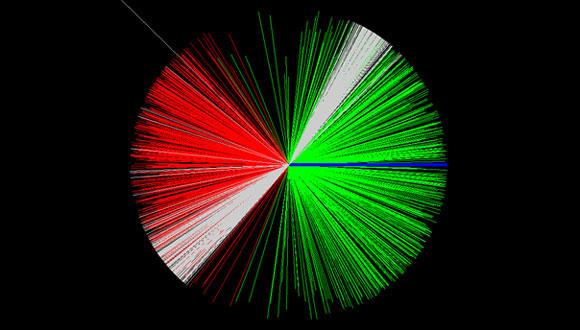Joint Seminar in Nuclear Physics
PROGRAM
14:30 - 14:45 Refreshments
14:45 - 15:45 “Hypernuclei in Heavy Ion Collisions: Observations , Opportunities and Outlook",Josef Pochodzalla, Johannes Gutenberg-University Mainz and Helmholtz Institute Mainz
Abstract:
I will briefly summarize the experimental status of hypernuclei measurements in relativistic heavy ion reactions. The difference between the production process in the participant and spectator zone will be stressed. Different observables, which are unique for heavy ion reactions will be presented. Finally I will discuss the perspectives for the observation of multi strange nuclei in nucleus-nucleus collisions.
15:45 - 16:15 Coffee Break
16:15 - 17:15 "Nuclear Charge-Exchange Reactions Exciting to the Isobar Analog State and the Neutron Skin”, Minh Loc Bui, TAU
Abstract:
The accurate experimental cross-section of charge-exchange reaction excit- ing to the isobar analog state, namely the (3He,t)IAS is a reasonable probe for the neutron-skin of heavy nuclei [1]. Within the folding model, the (3He,t)IAS cross-section is determined by the difference between the neutron and proton densities and the isospin-dependence of the nucleon-nucleon interaction in the nuclear medium (the effective NN interaction). At the energy high enough, the complications of effective NN interaction can be neglected and the Franey-Love t-matrix effective interaction [2, 3] can be used. The density of 3He projec- tile is given by the microscopic three-body calculation with the Argonne NN potential [4]. The choices for the target density is flexible. It can be ob- tained empirically from the proton elastic scattering at 800 MeV [5] or the- oretically from the Skyrme Hartree-Fock calculation [6]. The cross-sections of the (3He,t)IAS were calculated by solving the coupled-channel equations using the Lane-consistent formula for the nuclear optical potential. The model was applied to analyze the 208Pb(3He,t)IAS and 90Zr(3He,t)IAS experimental cross- sections at 140 MeV/nucleon [7]. The results show that the neutron-skin is 0.16 ± 0.04 fm for 208Pb and 0.09 ± 0.03 fm for 90Zr. The comparison with the value of neutron-skin for 208Pb in the well-known PREX experiment (0.33+0.16) −0.18 [8] was also discussed.
Bibliography:
-
Bui Minh Loc, Dao T. Khoa, and R. G. T. Zegers. Charge-exchange scatter- ing to the isobaric analog state at medium energies as a probe of the neutron skin. Physical Review C, 89:024317, Feb 2014.
-
W. G. Love, M. A. Franey. Effective nucleon-nucleon interaction for scat- tering at intermediate energies. Physical Review C, 24:1073–1094, 1981.
-
M. A. Franey, W. G. Love. Nucleon-nucleon t-matrix for scattering at in- termediate energies. Physical Review C, 31:488–498, 1985.
-
E. Nielsen, D.V. Fedorov, A.S. Jensen, and E. Garrido. The three-body problem with short-range interactions. Physics Reports, 347(5):373 – 459, 2001.
-
L. Ray, G. W. Hoffmann, G. S. Blanpied, W. R. Coker, and R. P. Liljestrand. Analysis of 0.8-GeV polarized-proton elastic scattering from 208Pb, 90Zr, 58Ni, and 12C. Physical Review C, 18:1756–1760, Oct 1978.
-
S. Goriely, M. Samyn, and J. M. Pearson. Further explorations of Skyrme- Hartree-Fock-Bogoliubov mass formulas. VII. Simultaneous fits to masses and fission barriers. Physical Review C, 75:064312, Jun 2007.
-
R. G. T. Zegers, et al. Extraction of Weak Transition Strengths via the (3He, t) Reaction at 420 MeV. Physical Review Letter, 99:202501, Nov 2007.
- PREX Collaboration. Measurement of the Neutron Radius of 208Pb through Parity Violation in Electron Scattering. Physical Review Letter, 108:112502, Mar 2012.


